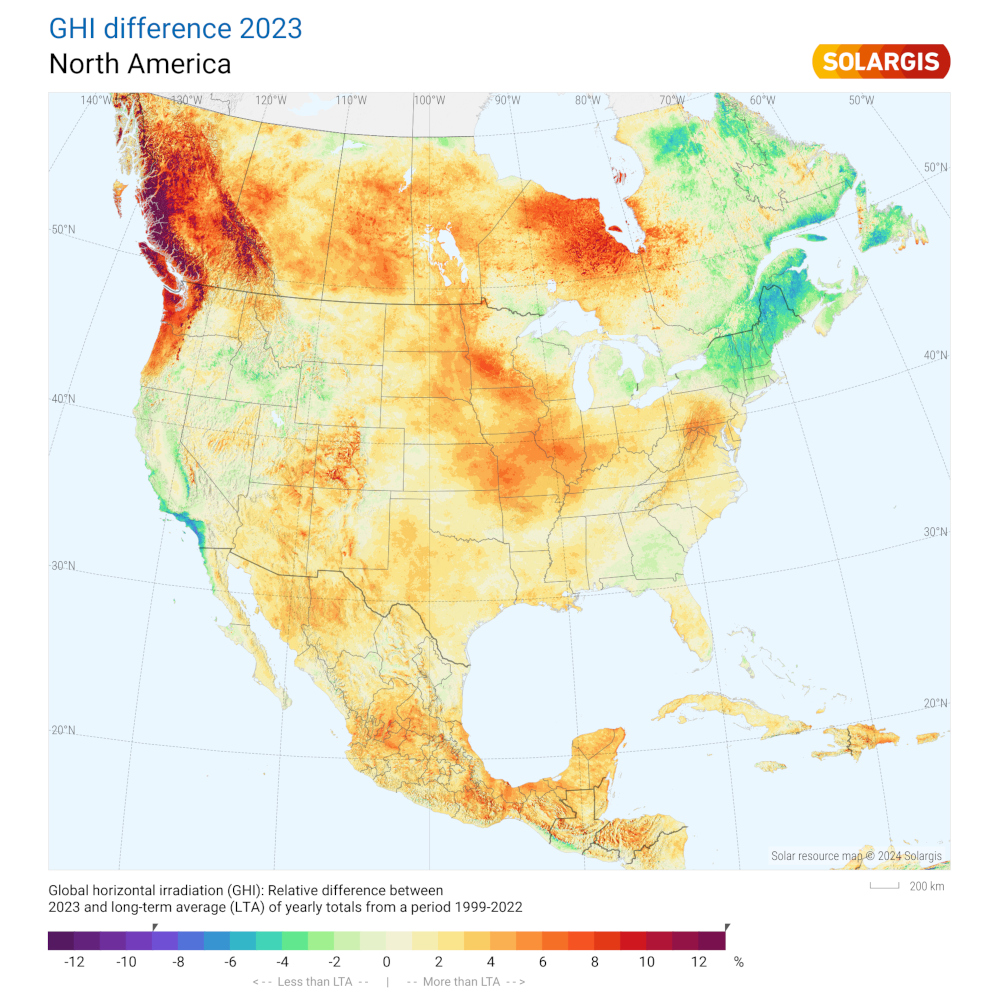
Inquiry
How Extreme Weather and Heat in 2023 Positively Impacted US Solar
The analysis of solar irradiance in 2023 showed that many regions experienced stable or above-average solar irradiance, supporting the growth and competitiveness of the solar industry. Australia and Southeast Asia, in particular, enjoyed higher than average solar irradiance thanks to favorable weather conditions and less cloud cover. This allowed them to exceed their long-term averages by 2% and 10%, respectively.
The United States also saw stable solar performance, with some regions benefiting from the El Niño effect, which brought more sunshine and less rain. Central America experienced stronger than average solar irradiance, while Africa maintained a steady and consistent solar resource. Europe, especially the southern Nordic regions, benefited from higher-than-average solar irradiance due to reduced cloudiness and rainfall. Most of Europe exceeded its long-term average by between 1% and 7%.
Solar power shone as a beacon of hope throughout 2023, amid the unprecedented climate crisis and rising global temperatures. The analysis revealed that solar irradiance remained remarkably stable or even higher than usual in many regions. This bodes well for the industry's resilience and competitiveness compared to other sources of energy.
However, extreme weather conditions pose challenges and risks to solar projects at a regional level. More frequent and severe hailstorms, particularly in the US and Australia, have caused significant losses and affected the insurability of projects. Additionally, the El Niño phenomenon, expected to persist until April 2024, may worsen extreme weather events in solar hotspots.

India, on the other hand, continued to struggle with a dip in solar performance due to a prolonged and intense monsoon season, which limited the availability of solar resources. Central India, in particular, was below its long-term average by between 1% and 5%. However, Southeast India exceeded its long-term average by up to 5% thanks to dry and sunny months in June and August.
South America, including Southern Brazil, also experienced a decrease in solar resource availability due to the La Niña impact.
As the solar industry adapts to a changing climate, stakeholders must address various challenges. These include ensuring stable power grids, implementing solar financing in developing economies, and expanding supply chain capacity in 2024 and beyond. With climate conditions in flux, solar investors and operators need to closely monitor resource variability patterns and embrace the best available solar resource data and software to navigate potential barriers and opportunities.
The outlook for 2024 may be influenced by changing global weather patterns. Therefore, stakeholders must closely monitor and analyze solar resource trends to optimize projects and mitigate ongoing risks. As we navigate through these extreme conditions, stakeholders need to enhance their monitoring, analyzing, and optimizing capabilities to embrace the unstoppable rise of solar power in our global energy landscape.
Our expert will reach you out if you have any questions!

